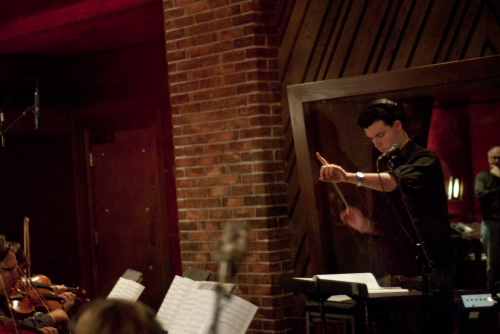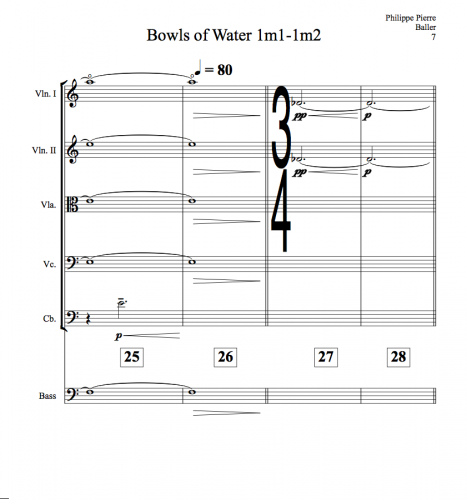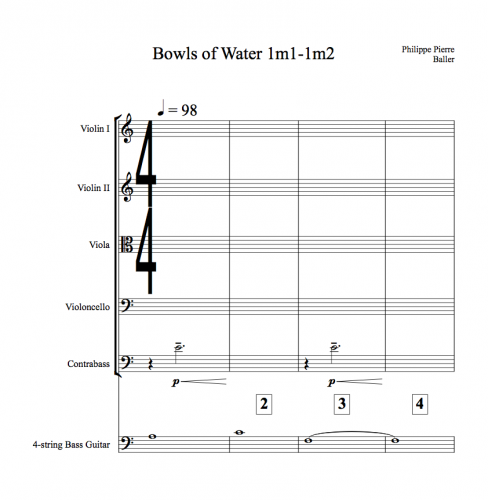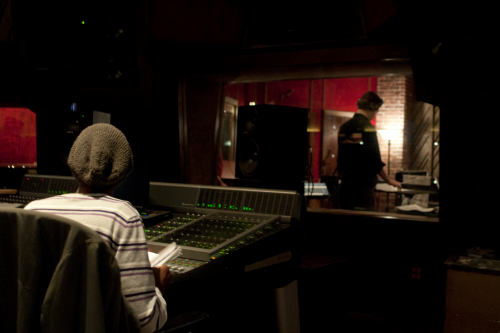Flip Flops in the Windy City: Conducting Someone Else’s Work
Conducting original work is pretty much the coolest thing you can do. Conducting someone else’s original work is almost the coolest thing you can do. Conducting your own work can be hard enough, so how do you prepare to conduct someone else’s work?
I had the pleasure of conducting the recording session for the very talented Philippe Pierre’s thesis film, Bowls of Water. We get VERY little studio time (just over 10 minutes), and Phil felt he could best use that time by sitting in the booth, hearing the music as it accompanies his prelay. Phil’s piece has a lot of ambience and other electronic elements, and it would be very difficult to reconcile these elements live, all while conducting a 16-piece orchestra. So he asked me to conduct for him, freeing him up to concentrate solely on the music. This is a very common practice in LA.
Preparing to conduct Phil’s piece was an interesting change of pace; while I’ve conducted my own work many times, I have never conducted someone else’s. As you write music you become intimate with it immediately, as it is coming organically from you. Once you need to conduct the piece, you already know it. This is obviously not true with someone else’s work.
The first thing I did was format Phil’s score in a style that I am accustomed to. Every conductor likes his score a certain way, and there was no reason for me not to have it the way I like it.
In this case, it meant one time large time signature at the top of the page, bold & boxed measure numbers out of the way at the bottom of the page, and bolded dynamics.
I conducted Phil’s piece immediately after my own. Our two pieces could not have been more different. Mine was meant to function entirely in the live room, while a lot of the sound space in Phil’s was taken up by prelay. His was slow, mine was fast. Mine was stacatto featuring a soloist, his was a string adagio, often homorhythmic. The biggest difference was that my piece treated the orchestra as one unit, playing together at most times. Phil often had passages played just by one group. This meant I had to be very deliberate with my cues, particularly with the bass:
Phil’s piece also had many more dynamic swells than mine. With limited studio time, this meant I had to really conduct those with my left hand, something I didn’t have to do in my own piece that day:
All in all, this was a successful, win-win experience. On one side, Phil got complete creative control of his piece, without having to concentrate on conducting. All he had to do to make changes was talk to me through the talk-back microphone in the booth. And on the other side, I got the invaluable experience of conducting someone else’s work with live players. I learned valuable lessons by doing that which I will apply when conducting my own work in the future.
You can view the final mix synced with session video here!






